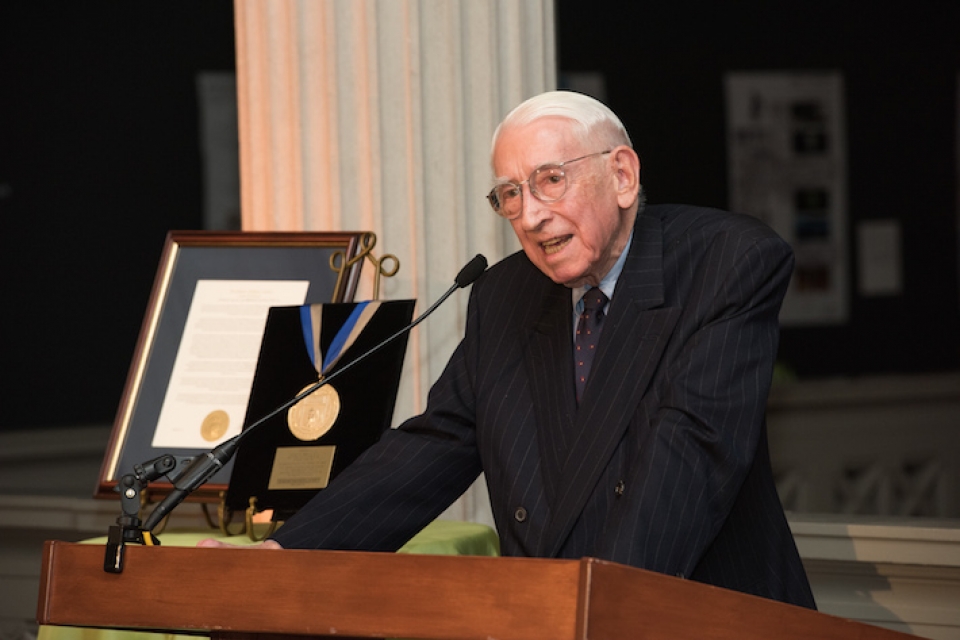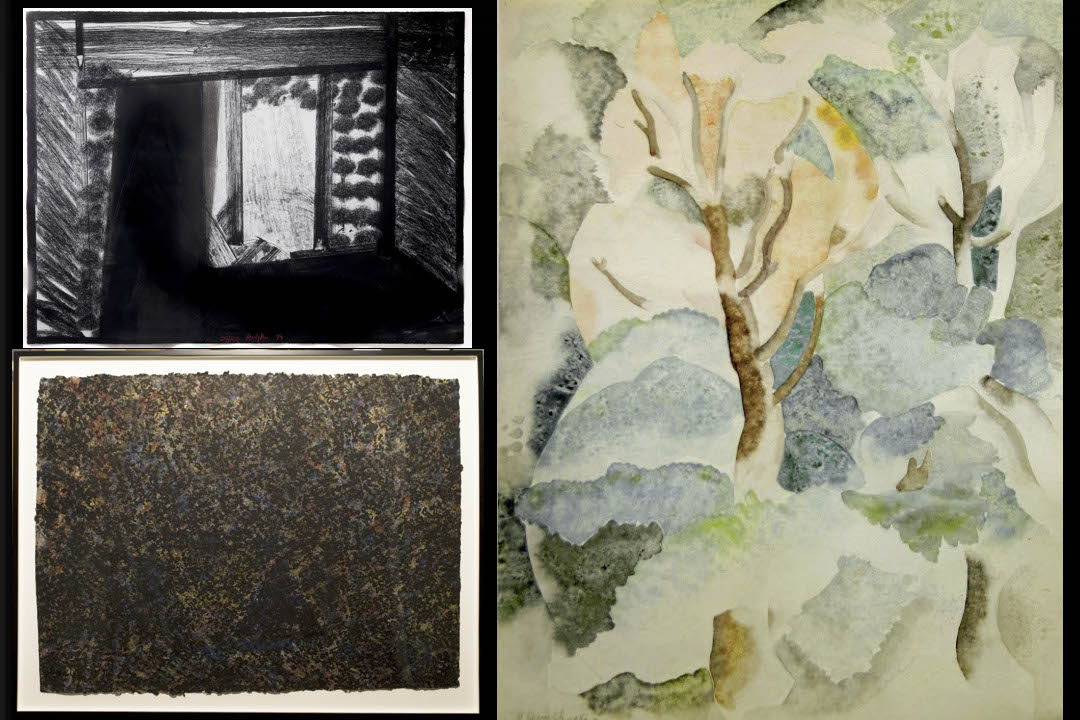The estate of celebrated oncologist and philanthropist, triple alumnus and GW Emeritus Trustee Luther W. Brady, A.A. ‘44, B.A. ‘46, M.D. ‘48, HON ‘04 has bequeathed more than 130 works of art to the gallery bearing his name at the George Washington University. The Luther W. Brady Art Gallery will display the donated pieces starting this fall.
The Brady estate concurrently gave an equally generous portion of his art collection to the Reading Public Museum in Reading, Penn., where Brady served two terms on its board and previously donated artworks. Pieces from the recent bequest will go on exhibit this summer.
“This significant collection enhances the George Washington University’s standing as a cultural touchstone in Washington, D.C., and provides hands-on classroom learning opportunities for our students,” President Mark S. Wrighton said. “We welcome all to experience, enjoy, and learn from these treasures that provide a window into a different era.”
The Brady Art Gallery’s exhibit displaying GW’s share of the donated artworks is expected to launch this September and run until March 2024. The exhibit will include paintings and sculptures by a number of internationally renowned artists, including “op art” pioneer Edna Andrade, painter and printmaker Richard Diebenkorn, sculptor Henry Moore and painter Jules Olitski.
“Dr. Brady was a visionary for expanding access to art at GW,” Brady Art Gallery Assistant Director Olivia Kohler-Maga said. “Starting in the 1990s, he worked tirelessly for over two decades to provide the GW community with the opportunity to view the work of internationally acclaimed artists. The gift of these major artworks is a continuation of his legacy, yet another enduring contribution to an institution he believed gave him so much.”
The bequest already has provided a unique opportunity for hands-on learning at GW. Students in a graduate seminar led by Associate Professor of Art History Bibiana Obler last semester completed original research and writing that will be included in the joint exhibition catalogue to be used both by the Brady Art Gallery and the Reading Public Museum.
“The course was a combination of very practical, hands-on [curatorial] work and deep, intensive archival research that was quite unique,” Obler said. “It’s a lovely thing, because the students were able to leave [the course] with publications to their name.”
Beyond studying the collection itself, the seminar, “Curating a Collection,” gave students a background on mid-20th century art and the Brady collection and widened to a more general analysis of the relationship between artists, donors and institutions. For graduate students who may go on to museum work, Obler said, the class provided an opportunity to examine why people collect art, why they donate it, and how researchers and curators can bring color and context to these collections.
“It seems like [Dr. Brady] really enjoyed his relationships with all these different people and museums,” Obler said. “I think part of the collecting process is about being involved with solutions: What does your museum need, and how can I be a part of that?”
A triple GW alumnus who also received an honorary Doctor of Fine Arts from GW in 2004, Brady built a remarkable legacy in medicine, academia and the arts. Brady was a leading radiation oncologist who helped pioneer breakthrough treatments for eye tumors and cervical cancer. For more than 50 years, he imparted his experience and expertise to students at Hahnemann University School of Medicine and Drexel University College of Medicine. Brady was a dedicated patron of the arts, serving on a number of museum boards and supporting prestigious institutions like the National Gallery of Art and the Philadelphia Museum of Art. Brady died in 2018 at age 92.
Brady left a lasting impact on his alma mater. His long term philanthropic support of GW, focused primarily on art and medicine, spanned more than five decades. His namesake gallery, now located in the Corcoran Flagg Building, houses thousands of works of historic and contemporary art of the GW Collection. Brady endowed the gallery in 2001, donating many gifts of artwork over the years and advocating for its relocation from the Media and Public Affairs building to the larger space in 2018. He also generously supported construction of the George Washington University Museum and The Textile Museum, the School of Medical and Health Sciences, and Ross Hall, and more during his lifetime.
His bequest also included a gift to endowment funding supporting a named radiation oncology professorship in the GW School of Medicine and Health Sciences. He took an active role in the stewardship of the university and its institutions, serving on the GW Board of Trustees for over 20 years and sitting on the board of directors of the George Washington University Museum and The Textile Museum. In 2015, the emeritus trustee was honored with the President’s Medal for his long standing service and philanthropy.
“Dr. Brady was a truly exceptional alumnus, leader, and patron, and he has left GW an equally incredible legacy that supports and commemorates his twin passions, art and medicine,” said Donna Arbide, GW’s vice president of development and alumni relations. “We are grateful for his countless contributions over many decades. He is sorely missed, but his support and positive impact lives on.”
These newly bequeathed materials, valued at over $3.3 million, provide a meaningful window into collectorship in that they were part of Brady’s personal collection, Obler said. Though Brady was a prolific philanthropist who donated much of his collection to public institutions during his lifetime, the pieces included in this gift were those he kept—presumably those that resonated with him personally. Some were created by personal friends or artists he’d met socially.
That personal connection opened some unusual research avenues for Obler’s students, who also wrote longer research papers that will be presented publicly as part of the Brady Art Gallery’s exhibition programming in the fall. One student, for instance, wrote on the connection between Brady’s work as an oncologist and his other career as a collector and lover of art. In his professional life Brady was required to be “attuned to the subtleties of visual analysis,” Obler said, as it pertained to medical imaging of his patients. He brought that same sharp eye to his art collection, “just for the joy of it.”
Gifts to the Luther Brady Art Gallery help produce scholarly exhibit catalogues and support educational programs for the entire community.





